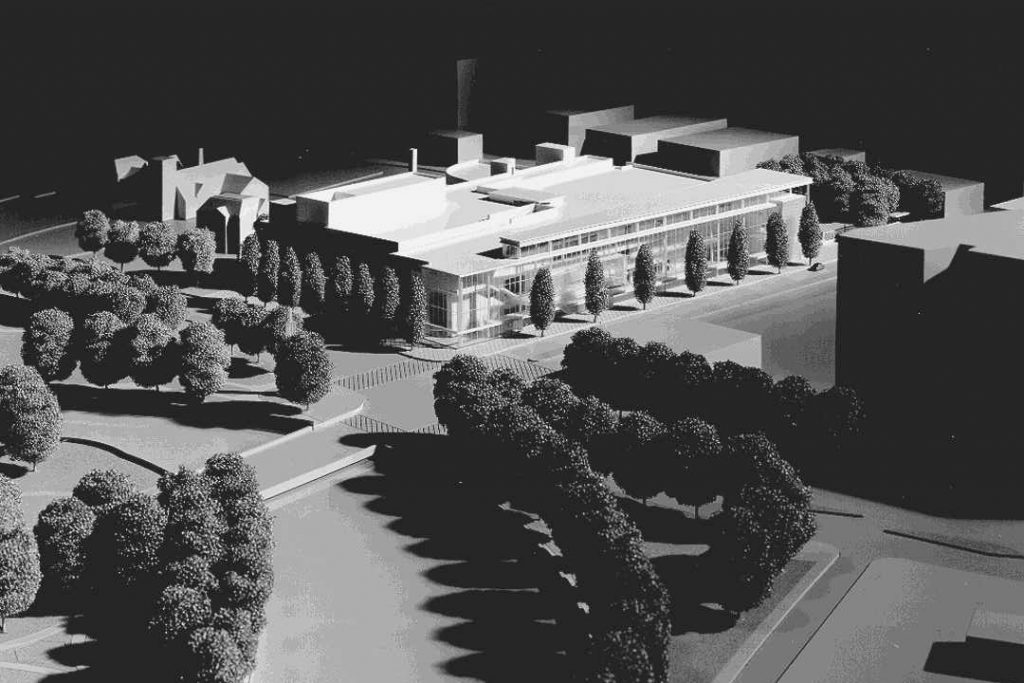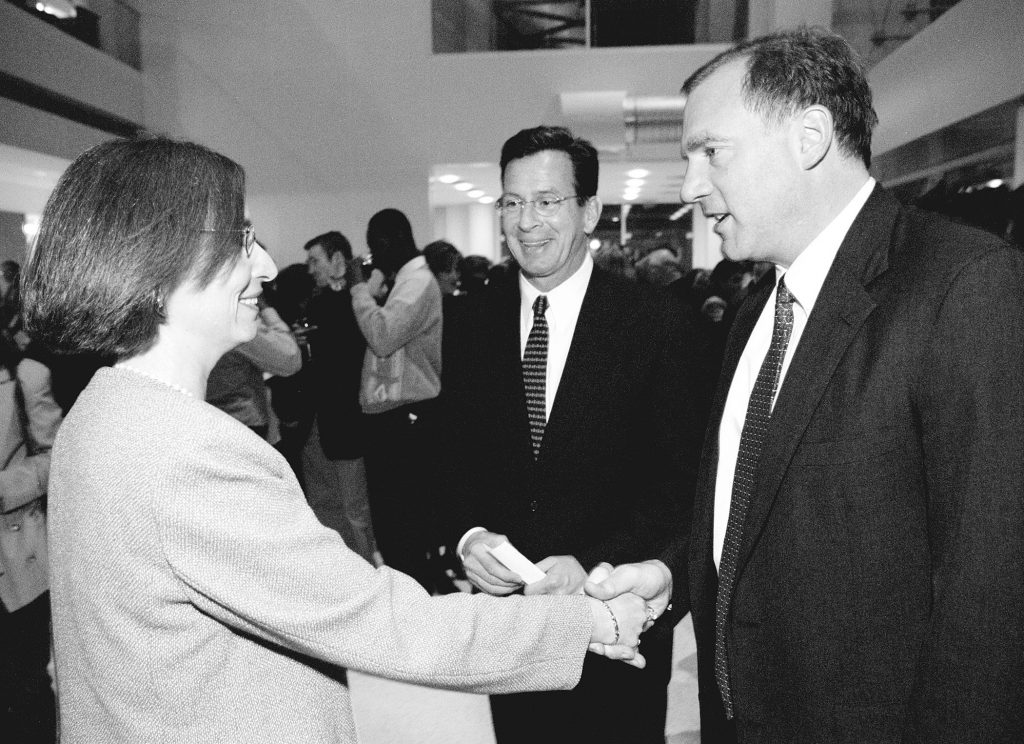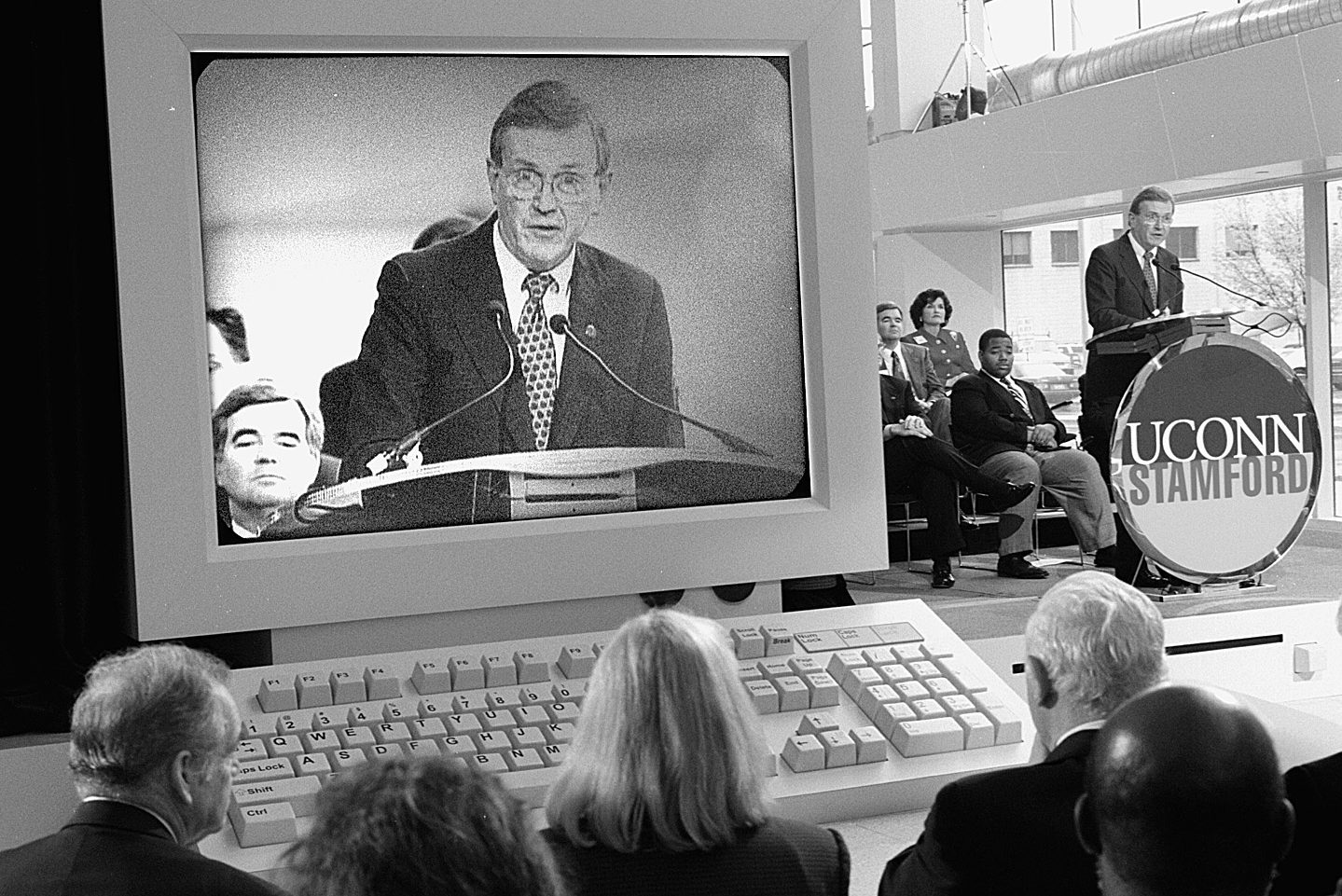Years before UConn’s Hartford Campus moved downtown, the University’s Stamford Campus made a similar move. Previously located on suburban Scofieldtown Road, the campus moved to the former Bloomingdale’s department store building in downtown Stamford in 1998. It was one of the first projects under the ambitious, $1 billion UConn 2000 initiative to renew, rebuild, and enhance the University’s infrastructure.
Twenty years ago, on April 17, 1998, the new downtown Stamford Campus was officially dedicated, and the doors opened onto the Rich Concourse. Here’s how the event was reported at the time, in the former University newspaper, the UConn Advance:
Representatives of state and local government and the business community joined faculty, staff, administrators and students to dedicate the new downtown campus of the University of Connecticut at Stamford on April 17.
UConn president Philip E. Austin said the opening of the University’s downtown Stamford campus was “a giant step forward” in the transformation of the state’s flagship university. “This magnificent facility, built under the auspices of UConn 2000, is a visible symbol of our emergence as one of the nation’s foremost institutions of public higher education,” he said. “Here in Stamford, state-of-the art teaching and research facilities and the extraordinarily innovative Connecticut Information Technology Institute (CITI) program show a university that is an integral part of the local community, an important contributor to the state, and above all, a center of educational excellence.
“The economic vitality and future of the City of Stamford is directly linked to the success of the University of Connecticut at Stamford,” Stamford mayor Dannel P. Malloy said. “The city and its corporate citizens can only benefit from the presence of UConn in our downtown community.
Chancellor Mark A. Emmert said the programs at Stamford are integrated with all the offerings of the University, take full advantage of cooperative agreements with the neighboring community-technical colleges, and are coordinated with the state university system.
“Here the local community is provided with the high quality and rigorous instructional programs prevalent throughout the University,” he said.

The campus moved from its suburban Scofieldtown Road location to the former Bloomingdale’s department store building in the heart of downtown Stamford. It was the first project begun under UConn 2000, the state’s $1 billion capital improvement program for the University.
Private support from the business community and individuals raised more than $10 million in a capital campaign to help outfit the building, establish scholarships and provide important support for programs. The chair of the campaign is Denis Nayden, a member of the board of the UConn Foundation and president and chief operating officer of GE Capital Corp.
“I’m proud of the rally and leadership put forth by the business community to expand and move this campus,” Nayden said. “And as an alum, I know that the value of my degree increases as the University improves. I know you agree this is just the beginning: the building is finished but the work has just begun.
During the dedication, a huge mockup of a computer, complete with keyboard and mouse, housed a video screen where people shared their thoughts about the University. The video presentation highlighted the state-of-the-art classrooms, science laboratories, computer center and library available to students in the undergraduate and graduate programs at Stamford. The facilities provide a link to other campuses of the University.
“This is a very special day for the state of Connecticut, a day when we dedicate a campus built through a public-private partnership in one of the most vibrant downtown areas of the state,” said Lt.-Gov. Jodi Rell, one of the keynote speakers.

“This new campus puts the University at the heart of the city and at the heart of the economic boom in Stamford,” added Curtiss Porter, director of the Stamford campus. “We are delighted to take our place among the leaders and decision-makers of Fairfield County.”
The Stamford campus will provide quality educational programs, like those offered through the Connecticut Information Technology Institute (CITI), a joint effort by UConn and the business community designed to offer training in information technology to the Fairfield County workforce. CITI is one of several programs UConn has undertaken in recent years to serve the needs of the business community in the state, including the recently announced partnership with the Travelers Group to offer classes in downtown Hartford, and a $156 million marine science construction program at the Avery Point campus in Groton.



